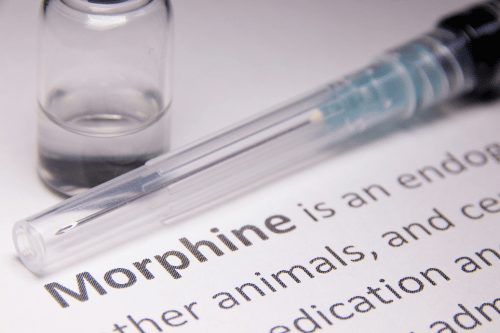Mixing Morphine and Alcohol: A Dangerous and Deadly Combination
Morphine is a potent prescription opioid often used in the treatment of severe pain. While it can provide significant relief for individuals suffering from conditions such as chronic pain or post-surgical recovery, its potential for misuse and addiction is well-documented.
When morphine is combined with alcohol abuse, the risks increase exponentially, as alcohol affects the body by enhancing the depressant effects of opioids, leading to severe consequences such as respiratory depression and potentially fatal outcomes, especially for adolescents who are more susceptible to substance abuse and mental health issues.
Adolescence is a critical stage of development, characterized by increased risk-taking behavior and vulnerability to substance use disorders. Combining morphine and alcohol is not just hazardous in the short term but can have devastating long-term consequences on an adolescent’s physical and mental health. This article will explore the dangers of mixing morphine and alcohol, the science behind their interaction, the impact on mental health, alcohol metabolism and the importance of seeking professional treatment for adolescents caught in the cycle of abuse.
Understanding the Basics of Morphine and Alcohol
Morphine is classified as an opioid, a category of drugs known for their powerful pain-relieving effects. It works by binding to opioid receptors in the brain, effectively blocking pain signals and altering the perception of pain. While effective for pain management, morphine is also highly addictive. Misuse, even when initially prescribed by a healthcare provider, can quickly lead to dependency, making it one of the most commonly abused prescription drugs.
Alcohol, on the other hand, is a central nervous system depressant. It slows down brain function and neural activity, resulting in symptoms such as impaired judgment, lack of coordination, and slowed reaction times. While moderate alcohol consumption might seem harmless to many, alcohol interactions with opioids like morphine can lead to enhanced sedation and potentially fatal outcomes due to the combined effects on the central nervous system.
What Happens When Morphine and Alcohol Are Mixed?
The combination of morphine and alcohol has a compounding effect, drastically increasing the potency of both substances. Mixing alcohol with opioids, such as morphine, poses significant dangers and health risks, including severe respiratory depression. Both morphine and alcohol suppress the central nervous system. This suppression can lead to significant respiratory depression, where breathing becomes dangerously slow or even stops altogether. This effect is the leading cause of opioid-related deaths, especially in cases where alcohol is involved.
Beyond respiratory depression, other dangerous side effects include severe drowsiness, confusion, blurred vision, and impaired motor skills. The risk of overdose skyrockets when these substances are combined, making it an especially risky behavior for adolescents who may be experimenting with drugs and alcohol. Adolescents may not fully grasp the life-threatening consequences of their actions, making them even more vulnerable to the dangers of mixing morphine and alcohol.

The Adolescent Risk Factor: Why This Age Group Is Particularly Vulnerable
Adolescence is marked by rapid brain development, particularly in areas related to decision-making, impulse control, and risk assessment. This stage of development also involves heightened emotional responses and susceptibility to peer pressure. For many adolescents, experimenting with drugs and alcohol is a rite of passage, but when prescription opioids like morphine are involved, the stakes become dangerously high.
According to studies from the Substance Abuse and Mental Health Services Administration (SAMHSA), adolescents who misuse prescription drugs are more likely to engage in binge drinking and other forms of risky behavior. Certain substances, like opioids, can influence the frequency and quantity of alcohol individuals consume, leading many to drink alcohol more frequently. The simultaneous use of alcohol and opioids not only increases the risk of addiction but also heightens the likelihood of developing mental health issues such as depression, anxiety, and suicidal thoughts. For young individuals already struggling with emotional or psychological challenges, mixing morphine and alcohol can exacerbate these problems and lead to severe outcomes, including overdose and death.
Mental Health Implications: How Substance Abuse and Mental Health Intersect
The relationship between substance abuse and mental health is complex and bidirectional. Adolescents dealing with mental health conditions such as depression or anxiety may turn to substances like alcohol or prescription opioids as a form of self-medication. However, this self-medication often worsens their mental health conditions, creating a vicious cycle of dependency and emotional instability.
When morphine and alcohol are mixed, the depressive effects on the central nervous system are amplified, leading to increased feelings of sadness, hopelessness, and despair. These negative emotional states can drive further substance abuse, making it difficult for adolescents to break free from addiction without professional help. Moreover, the combination of morphine and alcohol has been linked to heightened suicidal ideation, a critical concern for mental health professionals working with adolescents. Treatment options for individuals struggling with both alcohol use disorder and opioid use disorders include counseling and medication to support recovery from addiction.
The Science Behind the Interaction: Why the Combination Is So Dangerous
Understanding the science behind how morphine and alcohol interact sheds light on why this combination is so deadly. Opioid drugs, including morphine, are classified under the Controlled Substances Act due to their high potential for abuse and risk of overdose. Morphine binds to opioid receptors in the brain, altering pain perception and producing a sense of euphoria. Alcohol, meanwhile, increases the activity of gamma-aminobutyric acid (GABA), a neurotransmitter that inhibits brain activity. The simultaneous activation of these pathways leads to excessive sedation and dangerously slow respiratory function.
This interaction is particularly dangerous because it can lead to what is known as synergistic toxicity. In other words, the combined effect of morphine and alcohol is greater than the sum of their individual effects. This means that even small doses of morphine and alcohol, when taken together, can produce life-threatening outcomes, including respiratory arrest, coma, and death.

Addressing the Issue: The Role of Adolescent Mental Health Treatment Providers
Given the high stakes, it’s essential to address the issue of morphine and alcohol misuse among adolescents proactively. Mental health treatment providers play a crucial role in educating both adolescents and their families about the dangers of substance abuse, including the severe risks associated with combining alcohol and opioid medications. For those already struggling with addiction, a comprehensive treatment plan is necessary. Such a plan typically involves a combination of behavioral therapy, medication-assisted treatment, and support groups to address both the addiction and any underlying mental health conditions.
Early intervention is key in preventing long-term damage. Treatment providers specializing in adolescent care, like those at adolescent mental health, offer tailored programs designed to meet the unique needs of young people. These programs focus not just on the immediate issue of substance abuse but also on long-term recovery and the development of healthy coping strategies.
Why You Shouldn’t Self-Medicate: The Hidden Dangers of Combining Prescription Opioids and Alcohol
Self-medication is a significant issue among adolescents, particularly those who suffer from chronic pain or mental health conditions. The tendency to use alcohol to cope with emotional distress is common, but when combined with prescription opioids like morphine, it becomes incredibly dangerous, significantly increasing the risk of opioid overdose. Even though healthcare providers strongly advise against drinking alcohol while taking opioids, many individuals ignore this warning, leading to severe consequences.
The combination of morphine and alcohol is particularly insidious because the initial effects may feel harmless or even pleasurable. However, the delayed onset of respiratory depression or other life-threatening side effects can catch users off guard, leading to a rapid deterioration in their condition. By the time help arrives, it may be too late to reverse the damage.
Long-Term Consequences: The Impact on Health and Future Opportunities
The long-term consequences of mixing morphine and alcohol extend far beyond the immediate risk of overdose. Adolescents who engage in this behavior are more likely to develop substance use disorders that follow them into adulthood. Additionally, the damage done to the brain and body during these formative years can have lasting effects, including cognitive impairment, mental health disorders, and diminished life opportunities.
Moreover, the stigma associated with substance abuse can be a significant barrier to seeking help. Adolescents may fear judgment from their peers, families, or even healthcare providers, leading them to hide their substance use and avoid treatment. This is why it’s critical to foster an environment of support and understanding, encouraging young people to seek help without fear of shame or retribution.
Conclusion: The Need for Awareness, Education, and Early Intervention
Mixing morphine and alcohol is a deadly combination that poses significant risks to adolescents. The interaction between these substances can lead to fatal outcomes, including respiratory failure and overdose. Beyond the immediate dangers, the long-term consequences of drug abuse are profound, affecting both mental and physical health.
For families and caregivers, understanding the risks and knowing where to turn for help is crucial. Early intervention, comprehensive treatment, and ongoing support are essential for helping adolescents navigate the challenges of addiction and mental health. By raising awareness and providing access to quality care, we can help prevent the tragic outcomes associated with the misuse of morphine and alcohol among young people.
For more information on addiction treatment options and mental health resources for adolescents, visit adolescent mental health.










